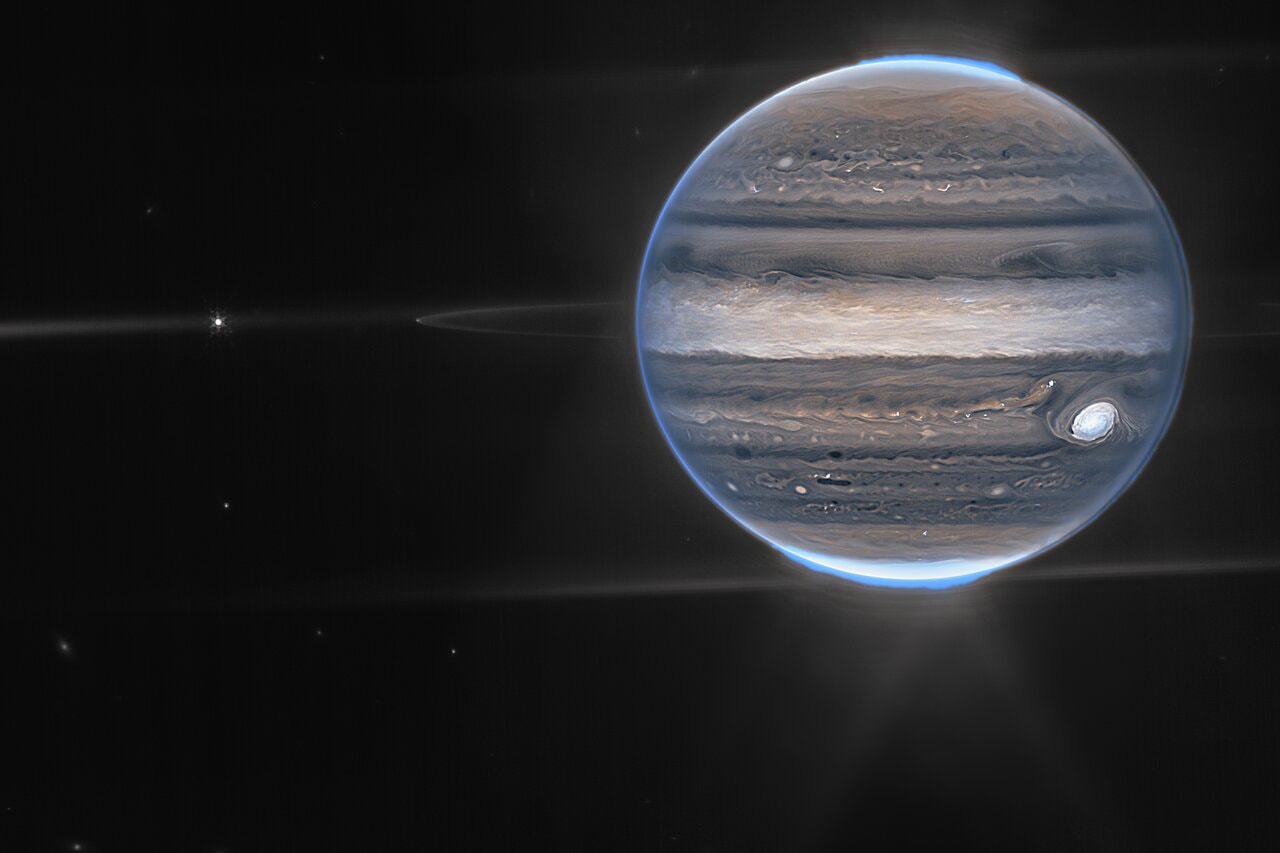
Posted on 08/23/2022 5:23:19 AM PDT by Red Badger

NASA has shared a new image taken by its James Webb Space Telescope. Earlier this month, the space agency published photos of Cartwheel Galaxy. The galaxy is located in the Sculptor constellation approximately 500 million light-years from Earth.
Now, NASA is using the telescope to get a closer look at the planet of Jupiter and its surrounding moons. As the largest planet in the solar system, Jupiter is considered the third brightest object in the night sky from Earth, following the Moon and Venus.
The new photograph was composed using two filters on the Webb’s NIRCam instrument, an imager that detects light to study how and when stars, planets and galaxies were formed.
“In this wide-field view, Webb sees Jupiter with its faint rings, which are a million times fainter than the planet, and two tiny moons called Amalthea and Adrastea,” NASA observed. “The fuzzy spots in the lower background are likely galaxies “photobombing” this Jovian view.”
The space agency said that the telescope’s future Jupiter observations will aid scientists in learning more about the planet’s inner life.
Webb Ping!....................
I lkike that!
Unusual for the rings to show up in the photo!
They used a wide field lens with a super sensitive light filter...................
“the planet of Jupiter”...
Wow, looks like you can see its atmosphere distinct from its surface.
I wonder if the telescope can see the ring around Uranus?
I wonder if they can vary the exposure time for individual pixels. A variable integate-and-dump time depending on the intensity sensed by each pixel. That would be a great way to get greater dynamic range for exposures.
“I wonder if the telescope can see the ring around Uranus?”
Too many Klingons in the way!
That would require massive amounts of memory........................
The simple answer is no
Not sure if it’s an artifact, but it looks like the atmosphere welling up at the two poles. Jovian “northern lights”?
Not my anus. Maybe Uranus.
“...its surface...”
__________
Not sure this gas giant has a recognizable surface akin to that of Earth or Mars.
Yes...................
Likely it would take massive background processing to sample each photodetector pixel multiple times during the exposure.
Are we sure it isn’t a slice of sausage?
Nice!
I thought Webb takes Infrared so it is able to see the dust rings by their relative warmth with respect to the cold space background, not by a visible light return. Perhaps the same thing with what looks like atmosphere at the poles.
Disclaimer: Opinions posted on Free Republic are those of the individual posters and do not necessarily represent the opinion of Free Republic or its management. All materials posted herein are protected by copyright law and the exemption for fair use of copyrighted works.